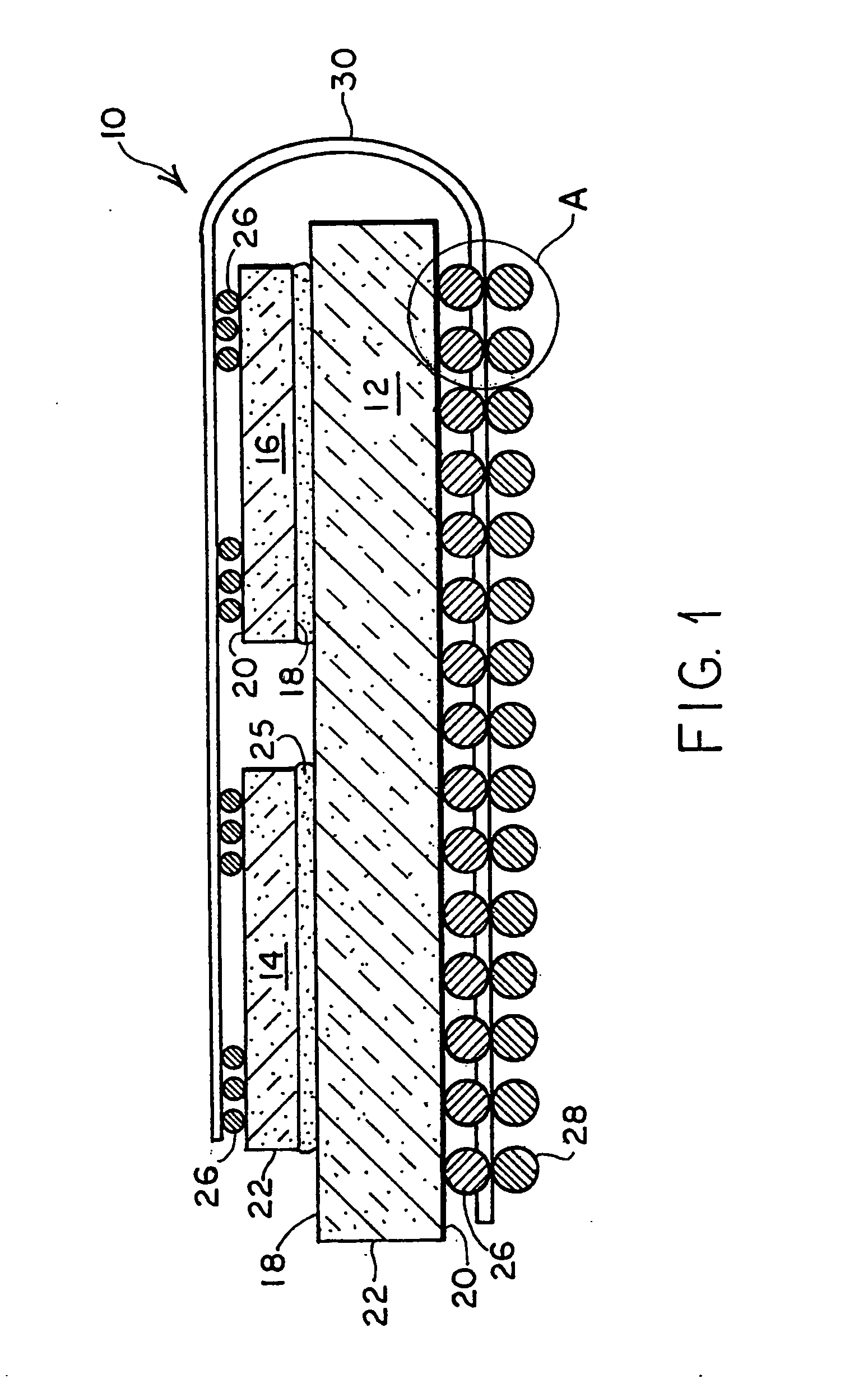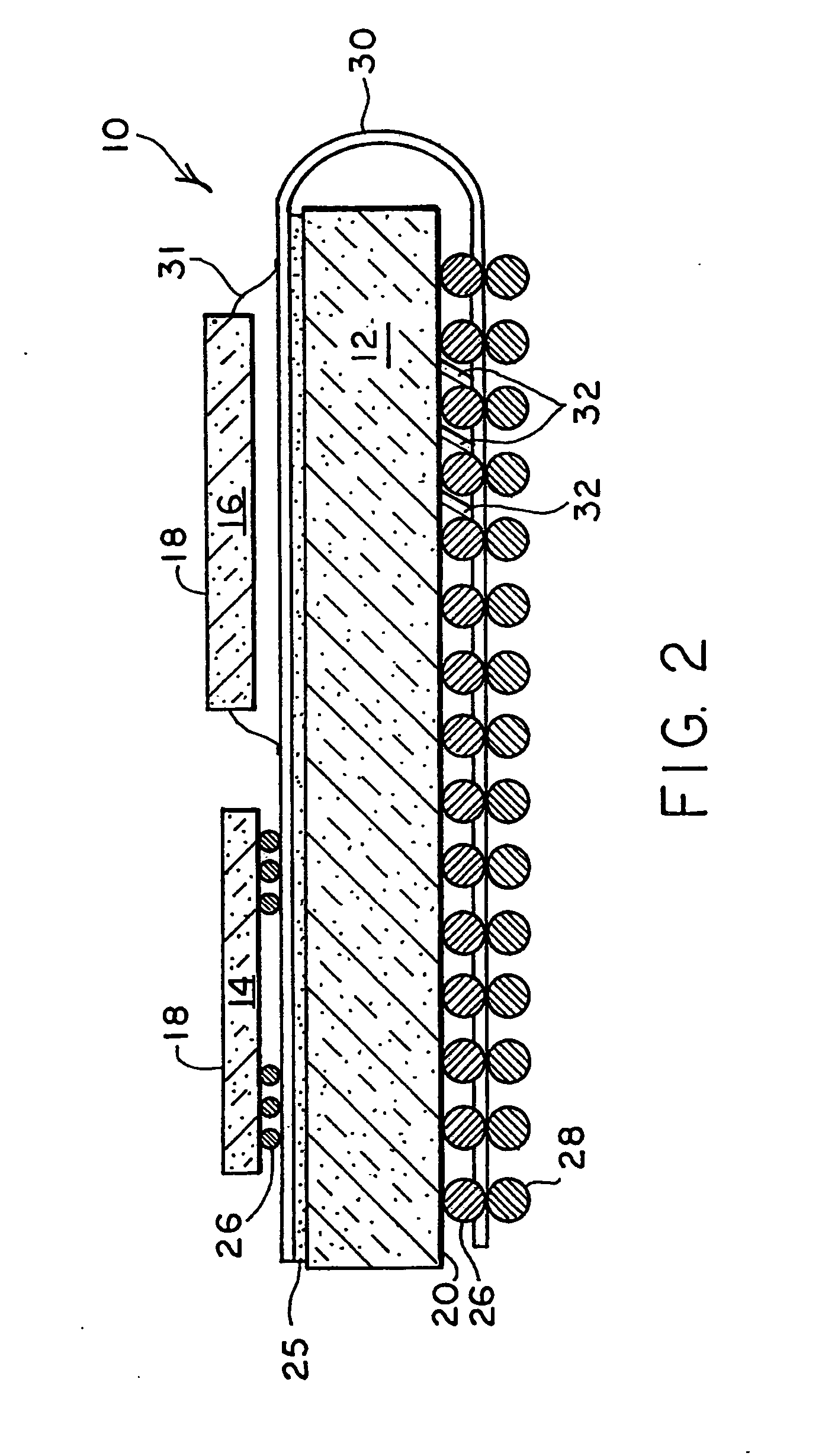Integrated circuit stacking system and method
a stacking system and integrated circuit technology, applied in the direction of printed circuit aspects, printed circuit non-printed electric components association, electrical apparatus construction details, etc., can solve the problems of large expense, lack of stacking chip scale package technology, and high cost and complexity
- Summary
- Abstract
- Description
- Claims
- Application Information
AI Technical Summary
Benefits of technology
Problems solved by technology
Method used
Image
Examples
Embodiment Construction
[0033]FIG. 1 is an elevation view of module 10 devised in accordance with a preferred embodiment of the present invention. FIG. 1 depicts a three-element preferred embodiment of the invention. The invention may, however, be employed with greater or fewer than three IC elements. Module 10 is comprised of a base element 12 and support elements 14 and 16. In the depicted embodiment, base element 12 and support elements 14 and 16 are shown as CSP devices, but the invention is not limited to arrangements of CSPs and may be employed to aggregate a variety of package types. Base element 12 and support elements 14 and 16 each have, in the depicted embodiment, upper surfaces 18 and lower surfaces 20 and peripheral or lateral sides 22. Lateral sides 22 may be in the character of sides or may, if the CSP is especially thin, be in the character of an edge. For example, in addition to the well known leaded and CSP packages, the present invention may be employed with packaged ICs that do not exhi...
PUM
 Login to View More
Login to View More Abstract
Description
Claims
Application Information
 Login to View More
Login to View More - R&D
- Intellectual Property
- Life Sciences
- Materials
- Tech Scout
- Unparalleled Data Quality
- Higher Quality Content
- 60% Fewer Hallucinations
Browse by: Latest US Patents, China's latest patents, Technical Efficacy Thesaurus, Application Domain, Technology Topic, Popular Technical Reports.
© 2025 PatSnap. All rights reserved.Legal|Privacy policy|Modern Slavery Act Transparency Statement|Sitemap|About US| Contact US: help@patsnap.com



